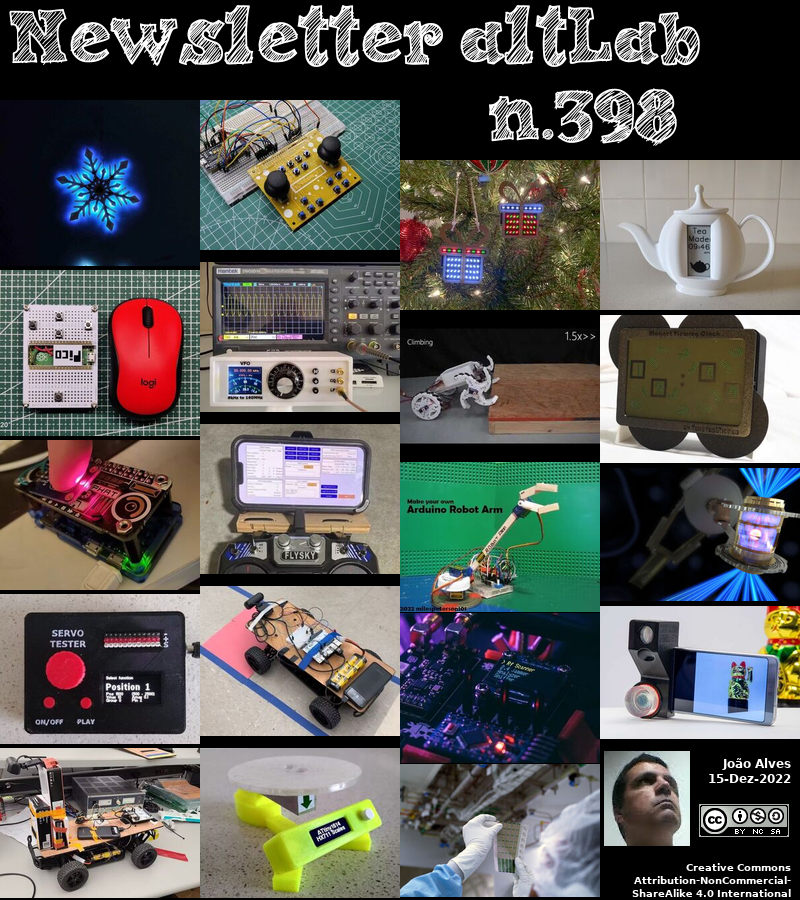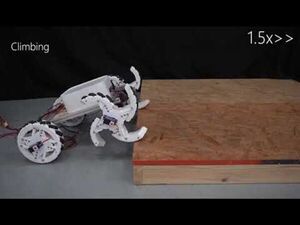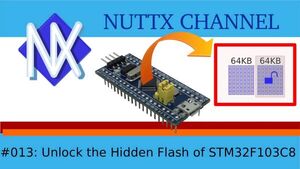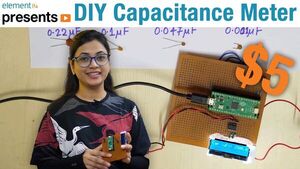2022-12-15 - Nº 398
Editorial
Esta é a Newsletter Nº 398 que se apresenta com o mesmo formato que as anteriores. Se gostar da Newsletter partilhe-a!
Todas as Newsletters encontram-se indexadas no link.
Esta Newsletter tem os seguintes tópicos:
Faz hoje anos que nascia, em 1802, o matemático húngaro János Bolyai. Ele é um dos fundadores da geometria não euclidiana - geometria que não inclui o axioma de Euclides de que apenas uma linha pode ser traçada paralelamente a uma dada linha através de um ponto que não se encontra na linha dada. O seu pai, Farkas Bolyai, tinha dedicado a sua vida a tentar provar o famoso postulado paralelo de Euclides. Apesar dos avisos do seu pai de que iria arruinar a sua saúde e paz de espírito, János seguiu trabalhando neste axioma até que, por volta de 1820, chegou à conclusão de que não podia ser provado. Prosseguiu desenvolvendo uma geometria consistente (publicada em 1882) na qual o postulado paralelo não é utilizado, estabelecendo assim a independência deste axioma em relação aos outros. Fez também um trabalho valioso na teoria dos números complexos.
Faz também hoje anos que nascia, em 1832, o engenheiro civil francês Gustave Eiffel. Ele era especializado em estruturas metálicas, conhecido especialmente pela Torre Eiffel em Paris. Construiu a sua primeira das suas pontes de ferro em Bordéus (1858) e esteve entre os primeiros engenheiros a construir fundações de pontes utilizando caixotões de ar comprimido. O seu trabalho inclui a concepção da cúpula giratória para o Observatório de Nice no cume do Monte Gros (1886), e o enquadramento da Estátua da Liberdade, agora no porto de Nova Iorque. Depois de construir a Torre Eiffel (1887-9), que utilizou para investigação científica em meteorologia, aerodinâmica e radiotelegrafia, construiu também o primeiro laboratório aerodinâmico em Auteuil, nos arredores de Paris, onde prosseguiu o seu trabalho de investigação sem interrupção durante a I Guerra Mundial.
Faz igualmente hoje anos que nascia, em 1852, o físico francês Henri Becquerel. Ele descobriu a radioactividade em sais fluorescentes de urânio. "Em reconhecimento dos serviços extraordinários que prestou pela sua descoberta da radioactividade espontânea", partilhou com Pierre e Marie Curie o Prémio Nobel da Física de 1903. As suas primeiras pesquisas foram em ótica. Em 1896, numa gaveta, tinha guardado durante alguns dias uma placa fotográfica em papel preto, e alguns cristais minerais de urânio deixados sobre ela. Mais tarde, descobriu que a placa se encontrava embaciada. Os cristais, há muito tempo fora da luz solar, não conseguiam fluorescer, mas ele descobriu acidentalmente que o sal era uma fonte de radiação penetrante: radioactividade. Três anos depois, mostrou que os raios eram partículas carregadas pela sua deflexão num campo magnético. Inicialmente, os raios emitidos pelas substâncias radioactivas receberam o seu nome.
Faz também hoje anos que nascia, em 1859, o médico e oculista polaco L.L. Zamenhof. Ele é responsável pela criação da mais importante das línguas artificiais internacionais - o esperanto. Ele acreditava que todos no mundo deveriam ser capazes de comunicar uns com os outros através de uma única língua internacional, por isso desenvolveu o esperanto, que significa "aquele que espera". Foi introduzido num panfleto que ele publicou em 1887. O vocabulário esperanto é composto principalmente de palavras com raízes latinas e palavras comuns a várias línguas. O esperanto é menos complicado do que uma tentativa anterior de língua artificial chamada Volapuk. Enquanto associações de esperanto se formaram em todo o mundo, nunca se tornou amplamente aceite.
Por fim, faz hoje anos que nascia, em 1861, o inventor norte-americano Charles Duryea. Ele, com o seu irmão J. Frank Duryea construiu o primeiro automóvel com múltiplas cópias fabricado nos EUA. A 28 de Novembro de 1895, Frank conduziu o seu carro para ganhar $2.000 na primeira Corrida Automóvel Americana em Chicago, patrocinada pelo Chicago Times-Herald. Viajaram 54 milhas de Chicago para Evanston, Illinois e de volta, em pouco mais de 10 horas. Em 1896, criaram a Duryea Motor Wagon Co. em Springfield, Mass. para fabricar várias unidades de um veículo a gasolina. A sua produção de 13 máquinas idênticas nesse ano é considerada como a primeira produção em série de automóveis americanos, ganhando-lhes o reconhecimento como "Fathers of the American Automobile Industry".
E nesta semana que passou a nave espacial Orion da NASA voltou à Terra, aterrando no Oceano Pacífico, a oeste da Baja California, às 9:40 da manhã de Domingo PST, após uma missão recordista, viajando mais de 1,4 milhões de milhas num caminho à volta da Lua e regressando em segurança à Terra, completando o teste de voo Artemis I. Este é o passo final da missão Artemis I que começou com um lançamento bem sucedido do foguetão Space Launch System (SLS) da NASA a 16 de Novembro, da plataforma de lançamento 39B no Kennedy Space Center da NASA, na Florida. Ao longo de 25,5 dias, a NASA testou o Orion no ambiente hostil do espaço profundo antes de voar como astronautas no Artemis II.
Também nesta semana que passou foi lançado a versão 6.1 do Kernel de Linux. Ao anunciar a chegada à Linux Kernel Mailing List, Linus Torvalds diz: "Então aqui estamos nós, uma semana atrasados, mas a semana passada foi agradável e lenta, e eu estou muito mais feliz com o estado da versão 6.1 do que estava há algumas semanas atrás". Uma importante adição ao Linux 6.1 é o suporte (experimental) à Rust, a "linguagem de programação multi-paradigma, de uso geral", que está a ter um crescimento tremendo nas soluções de código aberto. Apesar de pequeno, este passo inicial de criação é bom para a ambição de deixar os devs do kernel escreverem o código do kernel em Rust. Outra adição ao kernel Linux 6.1 é Multi-Generational Least-Recently-Used (aka MG-LRU; embora isto ainda não esteja activado por defeito). Para citar a documentação no kernel, esta característica de memória: "...optimiza a recuperação da página e melhora o desempenho sob pressão de memória" - hey: um melhor desempenho é sempre bem-vindo. O filesystem btrfs também recebeu inúmeras melhorias de desempenho, assim como o EXT4. O suporte do Nintendo HID foi muito melhorado. Globalmente, o kernel 6.1 do Linux oferece uma gama de novas funcionalidades e actualizações que melhoram o desempenho e a segurança dos sistemas baseados em Linux. Estas melhorias fazem do Linux um sistema operativo ainda mais poderoso e flexível, capaz de satisfazer as exigências de uma vasta gama de aplicações e utilizadores.
Por fim, nesta semana que passou, o Laboratório Nacional Lawrence Livermore conduziu a primeira experiência de fusão controlada na história a atingir este marco, também conhecido como breakeven de energia científica, o que significa que produziu mais energia a partir da fusão do que a energia laser utilizada para a impulsionar. "Este é um marco histórico para os investigadores e pessoal do National Ignition Facility que dedicaram as suas carreiras a ver a ignição por fusão tornar-se uma realidade, e este marco irá sem dúvida desencadear ainda mais descobertas", disse a Secretária da Energia dos EUA Jennifer M. Granholm. "A Administração Biden-Harris está empenhada em apoiar os nossos cientistas de classe mundial - como a equipa da NIF - cujo trabalho nos ajudará a resolver os problemas mais complexos e prementes da humanidade, como fornecer energia limpa para combater as alterações climáticas e manter um dissuasor nuclear sem testes nucleares".
Na Newsletter desta semana apresentamos diversas noticias, artigos científicos, projetos de maker e alguns vídeos interessantes.
 João Alves ([email protected])
João Alves ([email protected])
O conteúdo da Newsletter encontra-se sob a licença  Creative Commons Attribution-NonCommercial-ShareAlike 4.0 International License.
Creative Commons Attribution-NonCommercial-ShareAlike 4.0 International License.
Novidades da Semana

Splashdown! NASA’s Orion Returns to Earth After Historic Moon Mission
"NASA’s Orion spacecraft splashed down in the Pacific Ocean, west of Baja California, at 9:40 a.m. PST Sunday after a record-breaking mission, traveling more than 1.4 million miles on a path around the Moon and returning safely to Earth, completing the Artemis I flight test. Splashdown is the final milestone of the Artemis I mission that began with a successful liftoff of NASA’s Space Launch System (SLS) rocket Nov. 16, from Launch Pad 39B at NASA’s Kennedy Space Center in Florida. Over the course of 25.5 days, NASA tested Orion in the harsh environment of deep space before flying astronauts on Artemis II. “The splashdown of the Orion spacecraft – which occurred 50 years to the day of the Apollo 17 Moon landing – is the crowning achievement of Artemis I. From the launch of the world’s most powerful rocket to the exceptional journey around the Moon and back to Earth, this flight test is a major step forward in the Artemis Generation of lunar exploration,” said NASA Administrator Bill Nelson. “It wouldn’t be possible without the incredible NASA team." [...]

Linux Kernel 6.1 Released, This is What’s New
"Linus Torvalds is giving Santa Claus competition as the FOSS-lovin’ Finn is putting the best possible present under the tree this festive season: a brand new Linux kernel. Yes, Linux kernel 6.1 is here, ready to power the world’s servers, desktops, smartphones, switches, routers, and everything in between. Announcing the arrival on the Linux Kernel Mailing List, Linus Torvalds says: “So here we are, a week late, but last week was nice and slow, and I’m much happier about the state of 6.1 than I was a couple of weeks ago”. The Linux kernel is developed and maintained by a worldwide community of engineers and enthusiasts. While a great number of those who contribute to the Linux kernel as part of their day job others choose to do so in their free time, of their own accord, and on their own terms. Let’s take a closer look at what those awesome folks have been up to recently… Linux Kernel 6.1 Features A major addition to Linux 6.1 is mainline (experimental) support for Rust, the “multi-paradigm, general-purpose programming language” snowballing momentum across the open source landscape." [...]
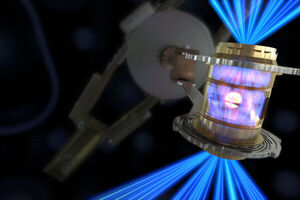
National Ignition Facility achieves fusion ignition
"The U.S. Department of Energy (DOE) and DOE’s National Nuclear Security Administration (NNSA) today (Dec. 13) announced the achievement of fusion ignition at Lawrence Livermore National Laboratory (LLNL) — a major scientific breakthrough decades in the making that will pave the way for advancements in national defense and the future of clean power. On Dec. 5, a team at LLNL’s National Ignition Facility (NIF) conducted the first controlled fusion experiment in history to reach this milestone, also known as scientific energy breakeven, meaning it produced more energy from fusion than the laser energy used to drive it. This first-of-its-kind feat will provide unprecedented capability to support NNSA’s Stockpile Stewardship Program and will provide invaluable insights into the prospects of clean fusion energy, which would be a game-changer for efforts to achieve President Biden’s goal of a net-zero carbon economy. “This is a landmark achievement for the researchers and staff at the National Ignition Facility who have dedicated their careers to seeing fusion ignition become a reality, and this milestone will undoubtedly spark even more discovery,” said U.S. Secretary of Energy Jennifer M. Granholm. “The Biden-Harris Administration is committed to supporting our world-class scientists — like the team at NIF — whose work will help us solve humanity’s most complex and pressing problems, like providing clean power to combat climate change and maintaining a nuclear deterrent without nuclear testing.” “We have had a theoretical understanding of fusion for over a century, but the journey from knowing to doing can be long and arduous. Today’s milestone shows what we can do with perseverance,” said Dr. Arati Prabhakar, the President’s chief adviser for Science and Technology and director of the White House Office of Science and Technology Policy." [...]
Outras Notícias
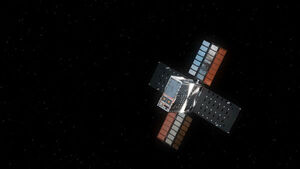
NASA’s Lunar Flashlight Has Launched – Follow the Mission in Real Time
"NASA’s Eyes on the Solar System web-based visualization tool lets you “see” the SmallSat as it journeys to the Moon and seeks out water ice in the darkest craters there. NASA’s Lunar Flashlight has communicated with mission controllers and confirmed it is healthy after launching Sunday, Dec. 11, at 2:38 a.m. EST (Saturday, Dec. 10, at 11:38 p.m. PST) from Cape Canaveral Space Force Station in Florida. About 53 minutes after launch, the small satellite, or SmallSat, was released from its dispenser to begin a four-month journey to the Moon to seek out surface water ice in permanently shadowed craters at the lunar South Pole. “It was a beautiful launch,” said John Baker, the Lunar Flashlight project manager at NASA’s Jet Propulsion Laboratory in Southern California. “The whole team is excited to see this small spacecraft do some big science in a few months’ time.” While Lunar Flashlight will never return to Earth, the world hasn’t missed its last chance to see the briefcase-size spacecraft. Rendered in crisp detail, a 3D digital version of the solar-powered SmallSat has made its debut in NASA’s Eyes on the Solar System, the agency’s recently revamped visualization tool." [...]

Nexperia announces two new additions to their TrEOS family of ESD protection devices for high-speed data lines
"Combining high surge robustness with very low trigger and extremely low clamping voltages, the PESD4V0Y1BBSF and PESD4V0X2UM offer a highly effective solution for the protection of sensitive systems Nexperia, the expert in essential semiconductors, has announced the latest additions to the Nexperia TrEOS portfolio, the PESD4V0Y1BBSF and PESD4V0X2UM extremely low clamping ESD protection diodes. These devices combine high surge robustness with very low trigger and clamping voltages and wide pass-bands, providing exceptional levels of immunity to surges, as demonstrated by their excellent IEC61000-4-5 ratings. “Nexperia developed the TrEOS portfolio specifically to offer our customers a range of high-performance ESD protection solutions for applications such as USB3.2, USB4™, Thunderbolt™, HDMI 2.1 and Universal Flash,” said Stefan Seider, Senior Product Manager at Nexperia. “The fast-switching speeds of the PESD4V0Y1BBSF and PESD4V0X2UM deliver an extremely effective ESD peak suppression performance for high-speed while their low trigger voltage helps to reduce the energy content of IEC61000-4-5 8/20 µs surge pulses significantly.” Available in the low-inductance DSN0603-2 package, the one-line PESD4V0Y1BBSF offers a trigger voltage of 6.3 V TLP combined with a typical device robustness and capacitance of 25 A 8/20 µs and 0.7 pF, respectively. The PESD4V0Y1BBSF offers a clamping voltage at 16 A 100 ns TLP of only 2.4 V, at 20 A 8/20 µs surge only 3.4 V. The two-line PESD4V0X2UM comes in the compact DFN1006-3 package and offers a trigger voltage of 8 V, combined with a typical device robustness exceeding 14 A 8/20 µs with a typical device capacitance of 0.82 pF. While both devices offer excellent protection for USB2.0 D+/D- lines, the PESD4V0Y1BBSF has a S21 pass-band exceeding 7.5 GHz, making it suitable for USB3.x @ 5 Gbps." [...]
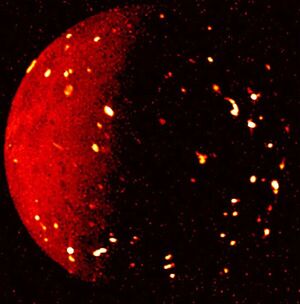
NASA’s Juno Exploring Jovian Moons During Extended Mission
"After revealing a trove of details about the moons Ganymede and Europa, the mission to Jupiter is setting its sights on sister moon Io. NASA’s Juno mission is scheduled to obtain images of the Jovian moon Io on Dec. 15 as part of its continuing exploration of Jupiter’s inner moons. Now in the second year of its extended mission to investigate the interior of Jupiter, the solar-powered spacecraft performed a close flyby of Ganymede in 2021 and of Europa earlier this year. “The team is really excited to have Juno’s extended mission include the study of Jupiter’s moons. With each close flyby, we have been able to obtain a wealth of new information,” said Juno Principal Investigator Scott Bolton of the Southwest Research Institute in San Antonio. “Juno sensors are designed to study Jupiter, but we’ve been thrilled at how well they can perform double duty by observing Jupiter’s moons.” Several papers based on the June 7, 2021, Ganymede flyby were recently published in the Journal of Geophysical Research and Geophysical Research Letters." [...]

Qualcomm Revolutionizes Home Networking with Wi-Fi 7 Immersive Home Platforms
"New platforms feature next-gen Multi-Link Mesh capabilities with modular chipset architecture - sampling now to manufacturers of home routers and mesh Wi-Fi systems Qualcomm Technologies, Inc. today unveiled its newest high-performance network offering for the home, the Qualcomm® Wi-Fi 7 Immersive Home Platform. Built to support the latest high-speed broadband connections and an array of high-performance devices populating today’s hyper-connected homes, the Qualcomm Wi-Fi 7 Immersive Platform delivers more than 20Gbps of total system capacity in a compact, power-efficient, cost-effective network chipset architecture. The platform introduces Qualcomm® Multi-Link Mesh, a breakthrough in home networking connectivity ushering in a new era of extremely high throughput and real-time responsiveness. “We developed the Qualcomm Immersive Home Platform to enable high-performance connectivity in a cost-effective, low-profile form factor delivering the newest innovations in home networking” said Nick Kucharewski, senior vice president and general manager, Wireless Infrastructure and Networking, Qualcomm Technologies, Inc. “Wi-Fi 7 brings powerful new capabilities which are best experienced using a tri-band system. Through this approach, Wi-Fi mesh can deliver performance gains for both new and legacy devices.” The new Qualcomm Immersive Home Platform is engineered to enable collaboration, telepresence, AR/VR, and immersive gaming applications of today and tomorrow’s home. Offering multi-Gigabit coverage and low latency for modern applications, the Qualcomm Wi-Fi 7 Immersive Home Platform with Qualcomm Multi-Link Mesh allows for immediate performance benefits for both legacy devices and the newest Wi-Fi 7 connected devices." [...]

Toshiba Develops Transparent Photoluminescent Phosphor for LED, Sensing and Security Printing Applications
"Toshiba Corporation (TOKYO: 6502) has unveiled a technology breakthrough in photoluminescence, a novel phosphor that delivers excellent solubility in polymers or organic solvents, where it is transparent and colorless under visible light, and that emits persistent red-light emissions under UV light, with excellent color purity and a luminescence six times that of current phosphors. These characteristics open up many potential applications in areas that include LED lighting, displays, deep UV sensing, security printing, and pesticide residue testing. A phosphor is a substance that absorbs energy from a light source, such as UV or visible light, and releases that energy by emitting colored light. Phosphors are commonly used in LED lighting and displays, and in security printing. However, in the field of mini- and micro-LED lighting and displays, where the chips used are very small, the inorganic phosphors typically used have a limited color reproduction capability and luminescence intensity. These phosphors are also insoluble and exist as fine particles, and when used in security printing, printed patterns become faintly visible, depending on the angle of view and light exposure." [...]

NXP Expands Industry’s Broadest Matter Portfolio with New, Secure Wireless MCUs
"NXP Semiconductors (NASDAQ: NXPI) today announced new devices designed to simplify the development of IoT and industrial IoT solutions. Adding to NXP’s expanding portfolio of end-to-end Matter solutions, the RW612 and the K32W148 devices combine advanced edge processing capabilities with integrated security to streamline development, simplify designs and reduce costs for Matter-enabled smart home devices. The recently launched Matter standard, developed within the Connectivity Standards Alliance by a consortium of industry leaders, including NXP, to ease device interoperability in the smart home. Matter aims to enable devices from different brands and ecosystems to seamlessly, reliably and securely communicate and thereby free consumers from ecosystem restraints. This innovative approach allows consumers to select devices based on desired features rather than complex or confusing connectivity requirements. With native support for Matter, the multi-protocol enablement provided by the NXP K32W148 and the tri-radio capabilities of the RW612 make it easier for developers to integrate Matter functionality into smart home devices." [...]
Chicony Power and TI join forces to bring GaN technology to next-generation energy-efficient laptop power adapter
"Texas Instruments (TI) (NASDAQ: TXN), a leader in high-voltage semiconductor solutions, today announced that Chicony Power designed in TI’s integrated gallium nitride (GaN) technology to power its latest 65-W laptop power adapter, Le Petit. Leveraging TI’s half-bridge GaN FET with integrated gate driver, LMG2610, Chicony Power and TI collaborated on a design to reduce the size of Chicony’s power adapter by 50% and increase efficiency up to 94%. As a leading power supply provider committed to improving power conversion efficiency in electronic power designs, Chicony Power has worked closely with international IC companies, providing them with market and technical requirements to help develop solutions in new designs. For the Le Petit laptop adapter design, Chicony Power teamed up with TI for its expertise in high-voltage design and its integrated GaN technology. TI’s LMG2610 is designed to be paired with the UCC28782 active clamp flyback (ACF) controller to create an easy-to-use, high-efficiency, and high-power-density solution for AC/DC designs under 75 W. Improving power conversion efficiency Increasingly, consumers seek smaller, lighter electronics while also wanting to reduce their energy footprint. In the laptop power adapter market, this has challenged engineers to find new ways to pack more power in smaller spaces while minimizing power loss to deliver more efficient adapters." [...]

Two Exoplanets May Be Mostly Water, NASA’s Hubble and Spitzer Find
"Though the telescopes can’t directly observe the planets’ surfaces, their densities indicate they’re lighter than rock worlds but heavier than gas-dominated ones. A team led by of researchers at the University of Montreal has found evidence that two exoplanets orbiting a red dwarf star are “water worlds,” where water makes up a large fraction of the entire planet. These worlds, located in a planetary system 218 light-years away in the constellation Lyra, are unlike any planets found in our solar system. The team, led by Caroline Piaulet of the Institute for Research on Exoplanets (iREx) at the University of Montreal, published a detailed study of this planetary system, known as Kepler-138, in the journal Nature Astronomy today. Piaulet and colleagues observed exoplanets Kepler-138c and Kepler-138d with NASA’s Hubble and the retired Spitzer space telescopes and discovered that the planets could be composed largely of water. These two planets and a smaller planetary companion closer to the star, Kepler-138b, had been discovered previously by NASA’s Kepler Space Telescope." [...]

Renesas and Fixstars to Jointly Develop Tools Suite that Optimizes AD and ADAS AI Software for R-Car SoCs
"Shorten Development Cycles by Enabling Rapid Development of Optimized Network Models and High-Speed Simulation. Renesas Electronics Corporation (TSE:6723), a premier supplier of advanced semiconductor solutions, and Fixstars Corporation, a global leader in multi-core CPU/GPU/FPGA acceleration technology, today announced the joint development of a suite of tools that allows optimization and fast simulation of software for autonomous driving (AD) systems and advanced driver-assistance systems (ADAS) specifically designed for the R-Car system-on-chip (SoC) devices from Renesas. These tools make it possible to rapidly develop network models with highly accurate object recognition from the initial stage of software development that take advantage of the performance of the R-Car. This reduces post-development rework and thereby helps shorten development cycles. “Renesas continues to create integrated development environments that enable customers to adopt the 'software-first' approach,” said Hirofumi Kawaguchi, Vice President of the Automotive Software Development Division at Renesas. “By supporting the development of deep learning models tailored to R-Car, we help our customers build AD and ADAS solutions, while also reducing the time to market and development costs.” “The GENESIS for R-Car, which is a cloud-based evaluation environment that we built jointly with Renesas, allows engineers to evaluate and select devices earlier in the development cycles and has already been used by many customers,” said Satoshi Miki, CEO of Fixstars." [...]

Microsoft and Viasat announce new partnership to deliver internet access to underserved communities globally
"New collaboration through the Microsoft Airband Initiative will increase internet availability for 5 million people across Africa and an additional 5 million people around the world by the end of 2025 On Wednesday, Microsoft Corp. (NASDAQ: MSFT) and Viasat (NASDAQ: VSAT) announced a new partnership to help deliver internet access to 10 million people around the globe, including 5 million across Africa. Viasat, a global communications company, is the first satellite partner to work with Microsoft’s Airband Initiative, and together they will deepen Airband’s work in the Democratic Republic of the Congo, Nigeria, Guatemala, Mexico, and the United States, as well as prioritize expanding the program to Egypt, Senegal and Angola to deliver much-needed internet connection, often for the first time. This first of its kind global partnership for Airband is an important step in reaching the Initiative’s expanded goal of delivering internet access to a quarter of a billion people across the world, including 100 million people on the continent of Africa, by the end of 2025. According to the International Telecommunication Union at the UN, roughly one third of the world’s population — or 2.7 billion people — have still never used the internet. Satellite allows internet access to reach remote areas that previously have had few, if any, options for conventional connectivity. Working together, the companies will combine expertise and assets to help enable telehealth, distance learning and education, precision agriculture, clean power, and other services to reach new areas through the transformational provision of power and connectivity." [...]
Ciência e Tecnologia

Novel Chemical Reaction Supports Carbon-Neutral Industrial Processes
"The reaction yields useful products from waste methane and carbon dioxide, both greenhouse gases, and may open up a path to transforming sustainable carbon chemistry A team of researchers led by scientists from the U.S. Department of Energy’s (DOE) Brookhaven National Laboratory has discovered the mechanisms behind a very effective catalyst for methane dry reforming, a chemical reaction in which two greenhouse gases, methane and carbon dioxide, are simultaneously converted into a mixture of hydrogen molecules and carbon monoxide. This mixture is generally called synthesis gas or “syngas” because it is used for the preparation of high-value chemicals and fuels. Methane and carbon dioxide are released into the atmosphere by several sources, including landfills and natural gas processing plants (methane is a key component of natural gas). Therefore, methane dry reforming offers a pathway for generating valuable chemicals from syngas while reducing the emission of two potent carbon-based greenhouse gases. This necessitates the use of industrially relevant catalysts that can assist with more than one reaction and, at the molecular level, have active sites that can enable complex chemistries. The catalyst studied here is one such example." [...]

Confident x-ray analysis
"In future it will be possible to incorporate data from deep space telescopes into the underlying atomic models with a high degree of reliability Very hot gas, as found in the sun's corona or in close proximity to black holes, emits very intense x-rays. It reveals the locally prevailing physical conditions, such as temperature and density. But there is one problem that researchers have been battling with for decades: the intensity rates of important emission lines of iron measured in the laboratory do not match those calculated. This causes ambiguity over the magnitude of the gas derived from the x-ray spectra. An international team under the leadership of the Max Planck Institute for Nuclear Physics in Heidelberg has now solved the problem using an exceptionally accurate experiment: theory and experiment finally concur. In future, this will allow x-ray data from deep-space telescopes to be analysed in the underlying atomic models with a high degree of reliability." [...]

Enhancing organic solar cells’ green glow
"Environmentally friendly renewable biosolvents could help clean up the manufacture of solar panels. Organic solar cells could be made even greener by switching the solvents used in their manufacture. Today’s toxic chlorinated solvents can be replaced by plant-derived alternatives without affecting the resulting solar cells’ light-capturing performance, KAUST researchers have shown. Organic photovoltaics (OPVs) are one of the greenest solar cell technologies, contributing as little as three grams of CO2 equivalent carbon emissions per KW of energy. “However, their fabrication still relies on halogenated solvents that, on top of being linked to reproductive hazards and cancer, are derived from petrochemical processes,” says Daniel Corzo, a Ph.D. student in Derya Baran's lab, who led the work. “We wanted to find green alternatives to protect the health and safety of workers when these cells are manufactured at a larger scale and to further reduce the carbon footprint of OPVs.” Solvents are critical to OPV manufacture as they are the basis of the printable inks that organic solar cells are made from." [...]
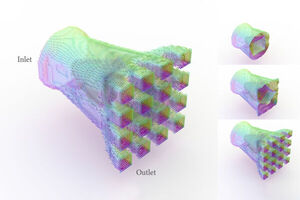
Computational system streamlines the design of fluidic devices
"This computational tool can generate an optimal design for a complex fluidic device such as a combustion engine or a hydraulic pump. Combustion engines, propellors, and hydraulic pumps are examples of fluidic devices — instruments that utilize fluids to perform certain functions, such as generating power or transporting water. Because fluidic devices are so complex, they are typically developed by experienced engineers who manually design, prototype, and test each apparatus through an iterative process that is expensive, time consuming, and labor-intensive. But with a new system, user only need to specify the locations and speeds at which fluid enters and exits the device — the computational pipeline then automatically generates an optimal design that achieves those objectives. The system could make it faster and cheaper to design fluidic devices for all sorts of applications, such as microfluidic labs-on-a-chip that can diagnose disease from a few drops of blood or artificial hearts that could save the lives of transplant patients. Recently, computational tools have been developed to simplify the manual design process, but these techniques have had limitations." [...]

USTC Realizes On-demand Storage of Photonic Qubits at Telecom Wavelengths
"In a recent study published in Physical Review Letters, a research team led by Prof. GUO Guangcan from the University of Science and Technology of China (USTC) of the Chinese Academy of Sciences (CAS) achieved on-demand storage of photonic qubits at telecom wavelengths using a laser-written waveguide fabricated in an erbium-doped crystal. Quantum memories are crucial devices in quantum networks. In order to construct quantum networks using current optical fiber networks, such devices ought to function at telecom wavelengths. However, due to their fixed read-out time, preexisting quantum memory systems at telecom wavelengths were unable to realize on-demand storage. In this study, researchers processed a fiber-integrated quantum memory at telecom wavelengths based on a laser-written waveguide fabricated in an erbium-doped yttrium silicate (167Er3+:Y2SiO5) crystal. In order to realize on-demand storage and retrieval, the researchers glued and integrated ordinary single-mode fibers at both ends of the waveguide." [...]

NIST Retires SHA-1 Cryptographic Algorithm
"The venerable cryptographic hash function has vulnerabilities that make its further use inadvisable. The SHA-1 algorithm, one of the first widely used methods of protecting electronic information, has reached the end of its useful life, according to security experts at the National Institute of Standards and Technology (NIST). The agency is now recommending that IT professionals replace SHA-1, in the limited situations where it is still used, with newer algorithms that are more secure. SHA-1, whose initials stand for “secure hash algorithm,” has been in use since 1995 as part of the Federal Information Processing Standard (FIPS) 180-1. It is a slightly modified version of SHA, the first hash function the federal government standardized for widespread use in 1993. As today’s increasingly powerful computers are able to attack the algorithm, NIST is announcing that SHA-1 should be phased out by Dec. 31, 2030, in favor of the more secure SHA-2 and SHA-3 groups of algorithms." [...]

Solving grammar’s greatest puzzle
"How a determined student made Sanskrit’s ‘language machine’ work for the first time in 2,500 years A grammatical problem which has defeated Sanskrit scholars since the 5th Century BC has finally been solved by an Indian PhD student at the University of Cambridge. Rishi Rajpopat (St John's College) made the breakthrough by decoding a rule taught by “the father of linguistics” Pāṇini. The discovery makes it possible to 'derive' any Sanskrit word – to construct millions of grammatically correct words including ‘mantra’ and ‘guru’ – using Pāṇini’s revered ‘language machine’ which is widely considered to be one of the greatest intellectual achievements in history. Leading Sanskrit experts have described Rajpopat’s discovery as ‘revolutionary’ and it could now mean that Pāṇini’s grammar can be taught to computers for the first time. While researching for his PhD thesis, published on 15th December 2022, Dr Rajpopat decoded a 2,500 year old algorithm which makes it possible, for the first time, to accurately use Pāṇini’s ‘language machine’. Pāṇini’s system – 4,000 rules detailed in his renowned work, the Aṣṭādhyāyī, which is thought to have been written around 500BC – is meant to work like a machine." [...]
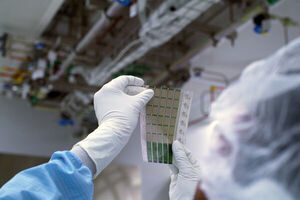
Paper-thin solar cell can turn any surface into a power source
"Researchers develop a scalable fabrication technique to produce ultrathin, lightweight solar cells that can be seamlessly added to any surface. MIT engineers have developed ultralight fabric solar cells that can quickly and easily turn any surface into a power source. These durable, flexible solar cells, which are much thinner than a human hair, are glued to a strong, lightweight fabric, making them easy to install on a fixed surface. They can provide energy on the go as a wearable power fabric or be transported and rapidly deployed in remote locations for assistance in emergencies. They are one-hundredth the weight of conventional solar panels, generate 18 times more power-per-kilogram, and are made from semiconducting inks using printing processes that can be scaled in the future to large-area manufacturing. Because they are so thin and lightweight, these solar cells can be laminated onto many different surfaces." [...]

A new spin on bouncing sound waves
"Insight into the spinning-induced scattering of sound could help create next-generation acoustic devices using new phonon modes. Interactions between a spinning object and soundwaves could help develop high-precision tools, such as tweezers that control the motion and position of submillimeter objects by manipulating acoustic waves, a KAUST-led international team suggests. Acoustic metamaterials, which can be tailored to transmit, trap and amplify sound waves at specific frequencies, are expected to enable innovative technologies in fields ranging from precision sensing to surgical tools. Extensive research has produced a range of metamaterials, such as ultrasonic lenses that focus 60 kilohertz soundwaves underwater to improve imaging and devices that could shield objects from sonar. However, these have focused on wave phenomena involving static objects. Therefore, the effects of motion on soundwaves remain lightly explored." [...]

UK-led robotic sky scanner reveals its first galactic fingerprint
"A major telescope upgrade has peered through to the distant Universe to reveal the spectra of a pair of galaxies 280 million light years away from Earth. The spectra provide a first glimpse of the sky from the WHT Enhanced Area Velocity Explorer (WEAVE) – a unique upgrade to the William Herschel Telescope (WHT) in La Palma on the Canary Islands. After its integration into the WHT last year, WEAVE has now begun its on-sky commissioning phase, ready to reveal more than 12 million spectra of stars and galaxies over the next five years. The Science and Technology Facilities Council (STFC) is one of the key partners in the operation of the WHT. Data processing, analysis and archiving for WEAVE is led by astronomers from the University of Cambridge, with support from the IAC in Spain and INAF in Italy. Understanding the Universe through spectra Spectroscopy is an essential element in an astronomer’s toolbox." [...]
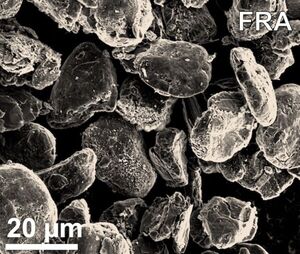
Rice flashes new life into lithium-ion anodes
"Fast ‘green’ process revives essential battery components for reuse How many rechargeable lithium-ion batteries are you wearing? How many are in your general vicinity? Probably more than a few, and they’re great for powering all the things important to modern lives: cellphones, watches, computers, cars and so much more. But where they go when they fail is a growing problem. Rice University scientists believe they have a partial solution that relies on the unique “flash” Joule heating process they developed to produce graphene from waste. The Rice lab of chemist James Tour has reconfigured the process to quickly regenerate graphite anode materials found in lithium-ion batteries, removing impurities so they can be used again and again." [...]
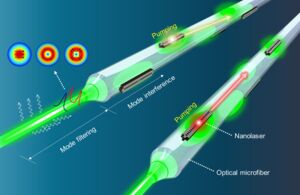
An all-optical approach to pumping chip-based nanolasers
"New technology could aid in meeting the ever-growing need to move more data faster Researchers have developed a new all-optical method for driving multiple highly dense nanolaser arrays. The approach could enable chip-based optical communication links that process and move data faster than today’s electronic-based devices. “The development of optical interconnects equipped with high-density nanolasers would improve information processing in the data centers that move information across the internet,” said research team leader Myung-Ki Kim from Korea University. “This could allow streaming of ultra-high-definition movies, enable larger-scale interactive online encounters and games, accelerate the expansion of the Internet of Things and provide the fast connectivity needed for big data analytics.” In Optica, Optica Publishing Group’s journal for high-impact research, the researchers demonstrate that densely integrated nanolaser arrays — in which the lasers are just 18 microns apart — can be fully driven and programmed with light from a single optical fiber. “Optical devices integrated onto a chip are a promising alternative to electronic integrated devices, which are struggling to keep up with today’s data processing demands,” said Kim. “By eliminating the large and complex electrodes typically used to drive laser arrays, we reduced the overall dimensions of the laser array while also eliminating the heat generation and processing delays that come with electrode-based drivers.” Replacing electrodes with light The new nanolasers could be used in optical integrated circuit systems, which detect, generate, transmit and process information on a microchip via light." [...]

Gold-based passive heating for eyewear
"Researchers from ETH Zurich have developed a new transparent gold nanocoating that harnesses sunlight to heat the lenses of glasses, thereby preventing them from fogging in humid conditions. This coating could potentially also be applied to car windshields. Researchers at ETH Zurich have developed an ultrathin, gold-based transparent coating that is able to convert sunlight into heat. It can be applied to glass and other surfaces to prevent them from fogging. Applications for the new coating include eyewear, car windshields. Researchers in the group led by ETH Professors Dimos Poulikakos and Thomas Schutzius point out that their coating is fabricated with methods which are used extensively in manufacturing." [...]
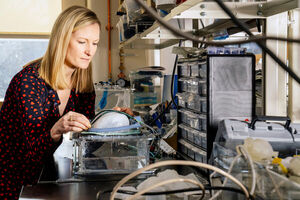
MIT engineers design a soft, implantable ventilator
"The new design works with the diaphragm to improve breathing. For many of us, the act of breathing comes naturally. Behind the scenes, our diaphragm — the dome-shaped muscle that lies just beneath the ribcage — works like a slow and steady trampoline, pushing down to create a vacuum for the lungs to expand and draw air in, then relaxing as air is pushed out. In this way, the diaphragm automatically controls our lung capacity, and is the major muscle responsible for our ability to breathe. But when the diaphragm’s function is compromised, the breathing instinct becomes a laborious task. Chronic diaphragm dysfunction can occur in people with ALS, muscular dystrophy, and other neuromuscular diseases, as well as patients with paralysis, and damage to the phrenic nerve, which stimulates the diaphragm to contract." [...]
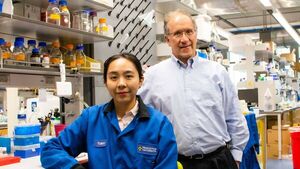
Princeton chemists create quantum dots at room temp using lab-designed protein
"Nature uses 20 canonical amino acids as building blocks to make proteins, combining their sequences to create complex molecules that perform biological functions. But what happens with the sequences not selected by nature? And what possibilities lie in constructing entirely new sequences to make novel, or de novo, proteins bearing little resemblance to anything in nature? That’s the terrain where Michael Hecht, professor of chemistry, works with his research group. And recently, their curiosity for designing their own sequences paid off. They discovered the first known de novo (newly created) protein that catalyzes, or drives, the synthesis of quantum dots." [...]
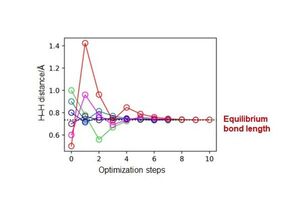
Quantum algorithm of the direct calculation of energy derivatives developed for molecular geometry optimization
"In recent years, research and development on quantum computers has made considerable progress. Quantum chemical calculations for electronic structures of atoms and molecules are attracting great attention as one of the most promising applications of quantum computers. In order to utilize quantum chemical calculations for chemistry and related fields, it is essential to develop geometry optimization methods for finding the most stable structure of molecules. The geometry optimization requires calculations of energy derivatives with respect to nuclear coordinates of molecules. The finite difference method is one approach for energy derivative calculations. On a classical computer, calculations based on this method for one-dimensional systems require at least two evaluations of the energy." [...]

Chaos gives the quantum world a temperature
"A single particle has no temperature. It has a certain energy or a certain speed -- but it is not possible to translate that into a temperature. Only when dealing with random velocity distributions of many particles, a well-defined temperature emerges. How can the laws of thermodynamics arise from the laws of quantum physics? This is a topic that has attracted growing attention in recent years. At TU Wien (Vienna), this question has now been pursued with computer simulations, which showed that chaos plays a crucial role: Only where chaos prevails do the well-known rules of thermodynamics follow from quantum physics." [...]
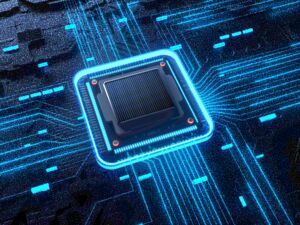
2D material may enable ultra-sharp cellphone photos in low light
"Novel device also combines light sensing, computing to save energy A new type of active pixel sensor that uses a novel two-dimensional material may both enable ultra-sharp cellphone photos and create a new class of extremely energy-efficient Internet of Things (IoT) sensors, according to a team of Penn State researchers. “When people are looking for a new phone, what are the specs that they are looking for?” said Saptarshi Das, associate professor of engineering science and mechanics and lead author of the study published Nov. 17 in Nature Materials. “Quite often, they are looking for a good camera, and what does a good camera mean to most people? Sharp photos with high resolution.” Most people just snap a photo of a friend, a family gathering, or a sporting event, and never think about what happens “behind the scenes” inside the phone when one snaps a picture. According to Das, there is quite a bit happening to enable you to see a photo right after you take it, and this involves image processing. "When you take an image, many of the cameras have some kind of processing that goes on in the phone, and in fact, this sometimes makes the photo look even better than what you are seeing with your eyes,” Das said." [...]

Particles of Light May Create Fluid Flow, Data-Theory Comparison Suggests
"A new computational analysis by theorists at the U.S. Department of Energy's Brookhaven National Laboratory and Wayne State University supports the idea that photons (a.k.a. particles of light) colliding with heavy ions can create a fluid of "strongly interacting" particles. In a paper just published in Physical Review Letters, they show that calculations describing such a system match up with data collected by the ATLAS detector at Europe's Large Hadron Collider (LHC). As the paper explains, the calculations are based on the hydrodynamic particle flow seen in head-on collisions of various types of ions at both the LHC and the Relativistic Heavy Ion Collider (RHIC), a DOE Office of Science user facility for nuclear physics research at Brookhaven Lab. With only modest changes, these calculations also describe flow patterns seen in near-miss collisions, where photons that form a cloud around the speeding ions collide with the ions in the opposite beam. "The upshot is that, using the same framework we use to describe lead-lead and proton-lead collisions, we can describe the data of these ultra-peripheral collisions where we have a photon colliding with a lead nucleus," said Brookhaven Lab theorist Bjoern Schenke, a coauthor of the paper." [...]

Laser controls ultra-fast water switch
"Researchers present a completely new concept for switches with unprecedented speed. Researchers at Ruhr-Universität Bochum have developed an ultra-fast circuit based on water. With a short but strong laser pulse, the water can be put into a conductive state within less than a trillionth of a second (10 -12 seconds) and behaves almost like a metal during this time. This means that the circuit is faster than the previously known switching speed of a semiconductor. Adrian Buchmann, Dr. Claudius Hoberg and Dr. Fabio Novelli from the Cluster of Excellence Ruhr Explores Solvation, RESOLV for short , report in the magazine APL Photonics from December 6, 2022. Laser makes the water act like a fast switch All computing operations of computers are based on circuits." [...]

An important step towards strong and durable biobased plastics
"Overcoming the low reactivity of biobased secondary diols in polyester synthesis. In a recent paper in Nature Communications, researchers at the Industrial Sustainable Chemistry group led by Prof. Gert-Jan Gruter take an important step towards the production of fully biobased, rigid polyesters. They present a simple, yet innovative, synthesis strategy to overcome the inherently low reactivity of biobased secondary diols and arrive at polyesters that have very good mechanical and thermal properties, and at the same time high molecular weights. It enables the production of very strong and durable biobased plastics from building blocks that are already commercially available. The research described in the Nature Communications paper was carried out within the RIBIPOL project funded by the Dutch Research Council NWO with contributions from industry, notably LEGO and Avantium. The toy company supported the project as part of the search for non-fossil alternatives for its plastic bricks." [...]

Liverpool computer scientists improve Python sorting function
"University of Liverpool computer scientists have solved a long-standing algorithmic puzzle to speed up a core building block of Python, the most popular programming language and the foundation of modern artificial intelligence systems. The discovery has resulted in a better solution to sorting lists in Python, called Powersort, that has been implemented in Python 3.11, the latest version released in October. Powersort arranges lists of objects in ascending order by the “list.sort” and “sorted” functions and Dr Sebastian Wild, Lecturer in the Department of Computer Science at the University of Liverpool, is responsible for its invention. Dr Wild had been studying TimSort, a custom sorting algorithm invented by Tim Peters, an influential Python developer, and specifically its merge policy, which determines the order in which detected runs are successively “merged” to form longer runs, until eventually the list is fully sorted. Dr Wild was surprised by how poorly understood its merge policy was as there had even been an algorithmic bug and potential security problem lurking associated with it. It turned out that this key component was later found to be flawed." [...]

Using the power of symmetry for new quantum technologies
"By taking advantage of nature’s own inherent symmetry, researchers at Chalmers University of Technology in Sweden have found a way to control and communicate with the dark state of atoms. This finding opens another door towards building quantum computing networks and quantum sensors to detect the elusive dark matter in the universe. “Nature likes symmetries and so do we. The foundation of our experiments is an innovative engineering trick where we control and make use of the available symmetries in a system which otherwise is very challenging to tame,” says Dr. Aamir Ali, researcher in quantum technology and primary author of the study. Quantum computers have the potential to vastly surpass today’s most advanced computers. A quantum computer is based on so-called quantum bits, or qubits, which have the ability to be in superposition of its possible states, 0 and 1, at the same time." [...]

A robust self-healing polymer made from a common chemical
"Material scientists at RIKEN have created a self-healing polymer by using an off-the-shelf compound for the first time1. The strategy they used is promising for improving the durability and minimizing the environmental impact of various commercial polymers for a wide range of applications. Polymers capable of healing themselves when damaged would last longer and thus reduce costs and the burden on the environment. Current strategies for producing self-healing polymers mainly employ reversible chemical reactions, but this usually entails complex synthesis processes. Furthermore, self-healing mechanisms based on chemical reactions may not work in certain environments such as in water and acidic and alkaline solutions. Ideally, material scientists would like to produce polymers that self-heal under a wide range of conditions, from readily available materials, using simple synthesis processes." [...]
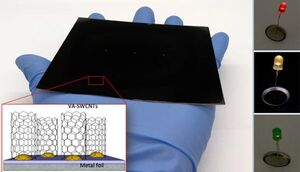
Charging up with carbon nanotubes
"Lawrence Livermore National Laboratory (LLNL) scientists have created vertically aligned single-walled carbon nanotubes on metal foils that could be a boon for energy storage and the electronics industry. Vertically aligned carbon nanotubes (VACNTs) have exceptional mechanical, electrical and transport properties in addition to an aligned architecture, which is key for applications such as membrane separation, thermal management, fiber spinning, electronic interconnects and energy storage. To date, widespread integration of VACNTs into next-generation technologies is thwarted by a lack of compatible, economic, mass-production capabilities. High-quality VACNTs are typically made on substrates such as silicon (Si) or quartz wafers that are rigid, expensive and electrically insulating. After exploring metal foil options in scientific literature, the LLNL team turned to Inconel metal substrates allowing them to integrate VACNTs into flexible devices, eliminate a transfer step from Si to other substrates and minimize electrical or thermal transport resistances at the interface between CNTs and the substrate, which is critical for electronic and energy storage applications. Inconel is a family of nickel-chromium-based superalloys that are oxidation-corrosion-resistant materials well-suited for service in extreme environments subjected to pressure and heat." [...]
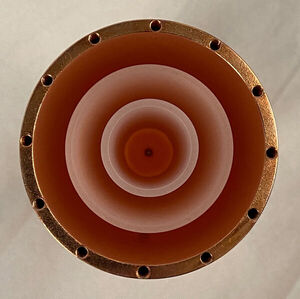
Detecting dark matter with quantum computers
"Dark matter makes up about 27% of the matter and energy budget in the universe, but scientists do not know much about it. They do know that it is cold, meaning that the particles that make up dark matter are slow-moving. It is also difficult to detect dark matter directly because it does not interact with light. However, scientists at the U.S. Department of Energy’s Fermi National Accelerator Laboratory have found a way to look for dark matter using quantum computers. Aaron Chou, a senior scientist at Fermilab, works on detecting dark matter through quantum science. As part of DOE’s Office of High Energy Physics QuantISED program, he has developed a way to use qubits, the main component of quantum computing systems, to detect single photons produced by dark matter in the presence of a strong magnetic field." [...]
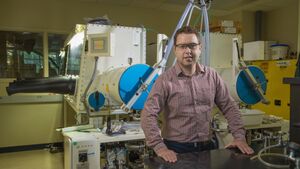
Baylor Chemistry Researchers Synthesize New Groundbreaking Compound
"Creating new synthetic compounds is often a complex and multi-step process that can take years of research. Caleb D. Martin, Ph.D., associate professor in the Department of Chemistry and Biochemistry at Baylor University and principal investigator of the Martin Research Group, and his team have developed a new compound known as tris(ortho-carboranyl)borane or BoCb3. Synthesized in one step, this state-of-art Lewis superacid – that has applications in the production of most common plastics – is more efficient to produce, safer for the environment and could potentially save billions of dollars in manufacturing costs. Martin published the results in the Sept. 22, 2023, issue of the journal Angewandte Chemie International Edition (GDCh). When Martin joined Baylor, he was left with some chemicals from the lab of the late Baylor chemist F. Gordon A. Stone, who held the position of Robert A. Welch Distinguished Professor of Chemistry, after Stone retired." [...]

'Quantum time flip' makes light move simultaneously forward and backward in time
"The time-flipped photon can't be used to restage "Back to the Future," but it could help us figure out some of the universe's most mysterious phenomena. For the first time, physicists have made light appear to move simultaneously forward and backward in time. The new technique could help scientists improve quantum computing and understand quantum gravity. By splitting a photon, or packet of light, using a special optical crystal, two independent teams of physicists have achieved what they describe as a 'quantum time flip', in which a photon exists in both forward and backward time states. The effect results from the convergence of two strange principles of quantum mechanics, the counterintuitive rules that govern the behavior of the very small. The first principle, quantum superposition, enables minuscule particles to exist in many different states, or different versions of themselves, at once, until they are observed." [...]
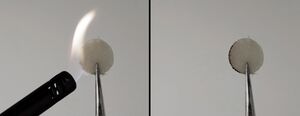
Flameproofing lithium-ion batteries with salt
"Rechargeable lithium-ion batteries power phones, laptops, other personal electronics and electric cars, and are even used to store energy generated by solar panels. But if the temperature of these batteries rises too high, they stop working and can catch fire. That's in part because the electrolyte inside of them, which ferries lithium ions between the two electrodes as the battery charges and discharges, is flammable. "One of the biggest challenges in the battery industry is this safety issue, so there's a lot of effort going into trying to make a battery electrolyte that is safe," said Rachel Z Huang, a graduate student at Stanford University and first author of a report published Nov. 30 in Matter. Huang developed a non-flammable electrolyte for lithium-ion batteries with 19 other researchers at the Department of Energy's SLAC National Accelerator Laboratory and Stanford University. Their work demonstrated that batteries containing this electrolyte continue to function at high temperatures without starting a fire." [...]

Researchers Create Ultracold Triatomic Gas of High Phase-space Density
"Recently, a research team led by Prof. PAN Jianwei and Prof. ZHAO Bo from the University of Science and Technology of China (USTC) of the Chinese Academy of Sciences (CAS), used adiabatic magneto-association to create ultracold gas of triatomic molecules with high phase-space density from degenerate mixture of 23Na40K molecules and 40K atoms for the first time. This work was published in Science. The use of highly controllable ultracold molecules in the simulation of complex chemical reactions allows for comprehensive study of complex system. Direct cooling of ultracold molecules is challenging due to the complexity of the vibrational and rotational energy levels in molecules. A method has been proposed for coherently converting ultracold atoms into ultracold molecules. Diatomic molecules, which benefit from high phase-space density and low temperature and can be coherently transferred to the ground state using laser, have been created using the Feshbach resonance." [...]
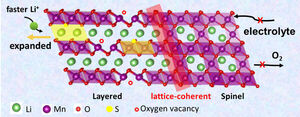
New Strategy Proposed for Ultra-long Cycle Lithium-ion Battery
"In recent years, lithium-ion batteries have been widely used in many fields. Compared with traditional lithium ion battery cathode materials, more lithium ions in lithium-rich manganese-based cathode materials of unit mass participate in energy storage. However, in the process of battery reaction, stress accumulation and lattice oxygen loss will cause some microcracks in lithium-rich manganese-based materials. The migration of transition metal ions will lead to phase transition of materials and other harmful side reactions, making the actual battery performance less than ideal. How to effectively avoid these adverse effects during the battery cycle is the key to improve the material performance and make the material truly practical in the future. According to a study recently published in Chemical Engineering Journal, researchers from the Hefei Institutes of Physical Science of the Chinese Academy of Sciences have prepared high-performance cathode materials for lithium-rich manganese-based lithium-ion batteries." [...]
Projetos Maker
Diversos Projetos interessantes.

Making a Hybrid Viewfinder
"If you have ever used an even moderately fancy analog or digital camera (or a telescope, or a gun sight, …) you are probably familiar with viewfinders. There are different levels of sophistication in relation to the function and engineering complexity of viewfinders, starting with sports viewfinders, more elaborate constructions offering a demagnification (a wider field of view than the human eye), adding indicator lines for framing and even offering overlays for proper focussing (rangefinders). Once you put a digital sensor in a camera, a lot of viewfinders get pretty boring really fast. Why use a viewfinder if you’ve got a display with a live sensor readout? Well, there are still a few advantages (other than pure nostalgia), so viewfinders made their comeback as EVFs or Electronic Viewfinders (a tiny display with some optics to give you the impression of a really large display in front of your eye). And that’s kind of a good tradeoff." [...]

An Easy To Build Programmer For 2704 / 2708 / TMS2716 / MCM68764 / MCM68766 EPROMs
"Introduction Some time ago I needed to program an MCM68766 EPROM to upgrade the BIOS in an IBM PC 5150, and in the process discovered that hardware which can program these is rather difficult to come by. So I set out to build my own. Knowing that the pin-out for 2708 EPROMs was quite similar to MCM68766 I thought I’d tick that off while I was at it, as this is another type that is very difficult to find hardware to program. Why is MCM68766 difficult to program? There is nothing algorithmically complicated about programming one of these – the main difficulty centres on the high Vpp voltage (26V). Most cheap EPROM programms have a max Vpp of 13V." [...]

6bit Digital-Analog-Converter
"Cheap discrete DAC with CD4007 IC A fifty-year old DAC design with two CD4007 CMOS ICs, but still good enough to get a grasp how DACs work. The output (which is inverted) should act according to the input bit pattern. Examples with 3.3V (CD4007UBE specified for 3V-18V): 111111 (representing 0d) = 0.0V 011111 (representing 32d) = 1.6V 001111 (representing 48d) = 2.5V The better the tolerances of the resistors (you need a lot :-D), the better the results. Use any input device you like (e.g. µC, mechanical switches). Also easily scalable to 9bit, 12bit, ...." [...]

YMFC-32-C Drone - Enhanced Telemetry System
"I created an MKR1010 based enhanced telemetry system for Joop Brookings YMFC-32 drone project. Arduino-Drone-YMFC-32-C Modified Version of Joop Brokking's YMFC32 Autonomous Quadcopter. Huge thank you to Joop Brokking for his hard work, great videos (seriously great videos) and ongoing inspiration. I enhance the telemetry system to use two-way communications via the serial port. The new telemetry interface allows me to change the PID tuning parameters with user supplied floating point values, change system variables and send debug data etc. The telemetry receiver was moved from and Arduino UNO to an MRK1010." [...]

Autonomous RC Car
"We use the compounded knowledge we have gained in class to make an autonomous RC car that follows a lane and stops at a red box stop. This autonomous car is based on raja_961’s “Autonomous Lane-Keeping Car Using RaspberryPi and OpenCV” project on Instructables (https://www.instructables.com/Autonomous-Lane-Keeping-Car-U sing-Raspberry-Pi-and/) as well as Team ReaLly BaD Idea's car and code from the previous session of ELEC 424 (https://www.hackster.io/really-bad-idea/autonomous-path-following-car-6c4992). The car follows a path guided by two blue lines, which starts out as a straight path but curves at the end. When the car detects red tape on the path, it stops momentarily before continuing again. In order for the car to run through the course smoothly, we needed to tune some important values that affected vision, steering, and speed. The resolution of the camera needed to be chosen so that the blue lines of the lane could be seen and the slope of each line could be determined by the OpenCV modules in our main Python code." [...]
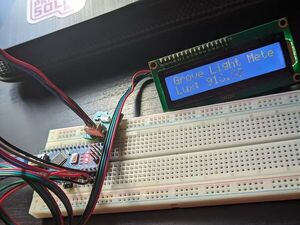
Grove Light Meter (Diy Luxommeter)
"A luxmeter is a tool that measures the amount of light in a given area. It is useful for ensuring proper lighting and monitoring light level This module has the advantage of being able to be powered with voltages of 3V3 and 5V. Mainly, the IC VEML7700 only admits voltages of 3V3, but this module already has an integrated Level Shifter which allows bidirectional communication and the power to use voltages of 5V and 3V3 at the same time. " [...]

Arduino IoT Based Energy Meter
"Monitor your energy consumption through the Arduino IoT Cloud using a MKR WiFi 1010, a MKR 485 Shield and a Modbus compatible energy meter. In this tutorial, we will show you how to create an energy meter which allows you to track your energy consumption through the Arduino IoT Cloud. Regardless of whether you want to save energy, automate your home accordingly or simply become more aware of your consumption, measuring your electricity consumption is a good idea. This tutorial provides a step-by-step explanation of how to set up your new energy meter, using the widely used Modbus protocol to monitor your data. If you are new to the topic, we recommend you read our article on Modbus before getting started. For those who are already familiar with Modbus and have used it before simply follow the steps in the following sections." [...]

Arduino Robotic Arm
"Build you own Robot arm to grab objects with just 3 servos and one Arduino UNO! How to make you own Robot Arm with Arduino UNO! Think of factories, how do they make their products? and super fast? Problem solved, They use Machines to do their work. Most use a Robotic arm because they can grip objects so well and move them fast." [...]
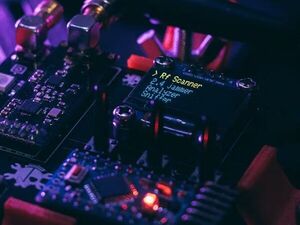
2.4Ghz ULTIMATE Tool WITH nRF24L01 | nRFBox
"2.4GHz scanner/jammer/Channel Analyzer using the nRF24L01 In this project, I build a 2.4GHz scanner/jammer/Channel Analyzer using the nRF24L01. Features - Scan 2.4Ghz band - 2.4Ghz jammer - Channel Analyzer Getting Started We will use Arduino Pro Mini as a processor. Also, an OLED display to show the Menu and desired options. With the nRF24 module, we can execute the features. - Arduino Pro Mini - nRF24 - Oled 0.96 SSD1306" [...]
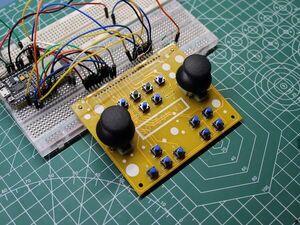
JOYCON Button and Analog Stick Board
"Joycon is a free-to-use button board that we can use for making XYZ stuff that requires the use of buttons or an analog joystick. This board was made with the intention of using an ESP32 microcontroller to build a game controller. I also wanted to build a breadboard-friendly system that would allow me to swap out the ESP32 board with another board if necessary. The goal was to create a board that could be tested before moving on to the next edition, which would include an ESP32 Wroom microcontroller with buttons and a joystick. The following are the materials used in this project- - CUSTOM PCB - Toggle Buttons - Analog Joysticks with cover - Male Header Pin connector - Breadboard - ESP32 Board - Jumper wires - Arduino Nano The Joycon Board is a straightforward PCB that acts as a breakout board for buttons and analog sticks. Each button is wired to the header pin and GND and works in a pull-down configuration." [...]
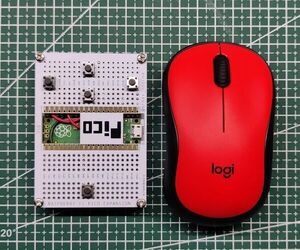
Raspberry Pi Pico As HID Mouse
"Hello Everyone. So here's a fun little project that tackles a major issue with the Raspberry Pi Pico Microcontroller. The Raspberry Pi Pico's pinout information is located on the bottom side of the board, which makes prototyping difficult. When we mount the device on a breadboard, we have to utilize a reference guide to determine which pins are whose, which is a messy procedure. All the pinout details are on the top side of the expansion board I made. To showcase the Pico's HID capabilities, we connect it to an extension board and utilize it to build a simple mouse." [...]
Holiday NeoPixel Display
"Create an NeoPixel (WS2812B) matrix and display festive holiday animations. Overview This project was a result of wanting to create a large display of NeoPixels to show animations at Christmas. It is smaller but more economical then covering my whole house with lights, while still being attractive and fun. Step 1: Create the grid I chose to make a grid 15 pixels wide and 20 pixels high. This resulted in needing 300 NeoPixels. For the density I desired I bought strips that had 30 pixels per meter." [...]
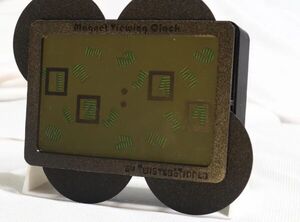
Magnet Viewing Clock
"I recently came up with a new idea for an unconventional display by using a magnetic viewing film that changes color in a magnetic field. In contrast to some other magnet viewing films this one shows a variety of colors depending on the magnetic field strength and also changes back to the original color when the magnetic field disappears. Naturally, this was going to be another clock project. Behind the viewing film numbers made of magnetic material are arranged on four wheels. The numbers are hidden behind a thin foil so they are only visible when they are viewed through the magnetic film. The clock design was inspired by Moose408's Slide Clock but instead of linear rails I used wheels to make the clock more compact so that it fits on a table." [...]

Automatic FART EXTRACTOR / Bathroom Dehumidifier Fan
"A fan, a bathroom dehumidifier, or, as I like to call it, an AUTOMATIC FART EXTRACTOR. Though I am very aware of the problems caused by excess moisture, like mold, and general degradation and decay, plus the health problems, my family is not so much. I’m using an Arduino Nano because it is small, and the DHT22 temperature and humidity sensor. There is a solid state relay; one can use a normal relay, of course, to turn the fan on and off. The potentiometer’s role is to adjust the trigger threshold, the humidity value where the extraction begins. I set mine at 60% and so far it’s OK. You can always adjust it later to suit your needs." [...]

PCB Present Ornament
"A PCB Gift Box that looks great sitting on a desk or hanging on a holiday tree. For the 2021 Holiday Season, I had a last-minute idea: design a PCB Ornament. I grabbed a vector image of a gift box. Using Inkscape, I converted it into a KiCad footprint and then turned its shape into an edge-cut layer. Using the silk screen, solder mask, and exposed copper sections, the is very decorative. On the front are 48 LEDs connected in a matrix." [...]
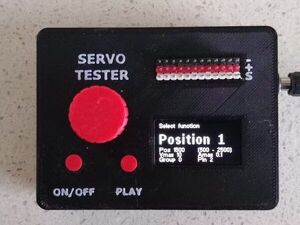
Servo Tester and Sequencer
"Test up to 12 servos with features such as setting movement range, velocity or acceleration, playback a sequence of positions & more This tester has many features that far more expensive testers don't have. - supports up to a dozen servos - move them to different positions - limit their range of movement - limit their velocity or acceleration - remember and playback a sequence of positions - control them from a PC - trigger a sequence with a signal or button My build of this project includes a 3D printed case and a PCB. I decided not to power it from a battery since a power supply is always available on my work bench. " [...]

Ic 555-Based Pcb Snowflake
"Winter is here, and the most interesting thing in winter is Christmas. As a PCB designer, I decided to build something useful for Christmas and so I made a blinking PCB snowflake for Christmas tree decoration. we can use this to decorate our Christmas trees, walls etc. The flashing of LEDs will attract everyone. So let's see how I made this. following are the things required in this built- - 1*555 timer IC - Custom PCB - 1*10K Resistor -0805 - 3*1kiloOhms Resistors-0805 - 1*10uf Capacitor-0805 - 1*10nf Capacitor-0805 - 12*LEDs - 0805 - 6*LEDs -1206 - 1*SOT-23 2n2222 transistor" [...]
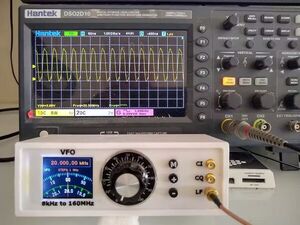
Variable Frequency Oscillator
"This is my remake of Mirko Pavleski's Universal VFO 10 KHz-160 MHz with Retro Analog Scale project. The Si5351 Clock Generator has three independent outputs. Each one can have a different frequency. Part of this redesign is to make the extra two outputs available for a future software upgrade. Also I wanted to redesign the case to make it more suitable for my benchtop by reducing the overall size. " [...]

DYI ATX PSU
"DYI variable psu (1.2-60V/8A) based on a ATX power supply unit, with the following outputs: - 3.3/5/12V 10A - 1.2-12V 8A - 12-60V 8A - USB power/charge 3A Disclaimer This is a personal project and all information is presented "as-is" without any guarantee whatsoever, including - but not only - regarding safety and accurracy. To be clear, if you use any information present in this repository, you are on your own. If you die from it, its your problem, not mine. Working with mains power may result in electric shock, serious injuries or even death. This project makes use of lethal voltages and currents, and appropriate protection is strongly advised. Additionally, these kind of projects may constitute a fire hazard and emit toxic fumes - never leave the apparatus working without proper supervision." [...]
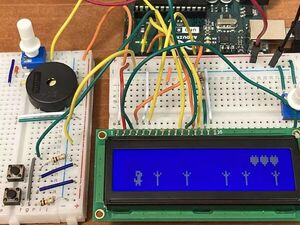
Hard-Dino LCD Game
"This is a small game on a 2 lines LCD screen. Help the Dino to jump over the cactus while avoiding the bats. Just push the pushbutton When we received the Arduino Starter Kit at home, my 12 years old son saw the LCDS screen. He asked: “Can we do video game on this screen ? “. I said: just very basic one." [...]
DIY Wi-Fi Controlled NeoPixel Christmas Star
"The Christmas star symbolizes the star of Bethlehem, which according to the Biblical story, guided the three kings, or wise men, to the baby Jesus. The star is also the heavenly sign of a prophecy fulfilled long ago and the shining hope for humanity. In this instructable, we will show you how to make your own wifi controlled Neopixel Christmas Star in which you can set your own color and effects by using your own smart phone. Supplies - NodeMCU x 1 - PerfBoard x 1 - DC jack x 1 - 5V 5 A adapter - 2mm White Acrylic Sheet - 3D printed parts - Silicone Wires - Female headers - 200 ohm x 1" [...]
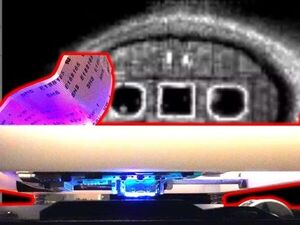
Laser Scanning Microscope From Blu-Ray Player
"DIY Laser Scanning Microscope made from a defective Blu-Ray Player. A Blu-ray player must be able to detect the microscopically tiny pits on DVDs in order to play back a film. Therefore, the question arises: Can a Blu-ray player also "see" other structures? This would mean that we can turn it into a microscope or at least use its parts to construct one. To do so, we first need to open a blu-ray player to find out how the detection system works. The heart piece is the optical pickup unit, OPU for short." [...]

Electronic Scales
"A 3D printed set of scales that uses a 5kg load sensor and HX711 module. This project came about after reading an article on Load Cells on the Circuit Journal site by Indrek Luuk. A load cell is designed to measure the weight of an object. It is basically an aluminum bar contain 4 resistive strain gauges. The 4 resistive strain sensors are connected together in a Wheatstone bridge configuration. At rest, the sensors have the same resistance (around 1000 ohms)." [...]

The Nap Button
"A simple project that uses an old Speaker pHAT and a Pi Zero to make a nice-sleep inducing sound, on the press of a button. Intro Button White noise can really help drown out sounds and help people relax and get to sleep - so I thought why not try a quick project with a Raspberry Pi to generate white noise or any sleeping aid sound with a the tap of a button. And despite the fact the supply chain issue may be coming to an end; it's still pretty hard to get a Raspberry Pi now so why not build it with some parts from an old project? Hardware Button I am actually re-using some older tech I had built prior - so the main hardware instructions for this can be found at my old PiBadge project. Just follow the part where the button is hooked up to the Speaker pHAT. The difference with this project is that the HAT is put on a Pi with just a normal case and no battery (will be powered from mains) along with a heatsink and some standoffs to allow the speaker room to fit." [...]
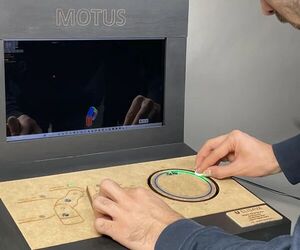
Robotic Arm Controller From Homemade Conductive Paint
"The goal of this project is to find an original and intuitive way to control a digital robotic arm made with the Processing program, using components that are compatible with Arduino. This consists of 5 different parts differentiated by colors. The first and the fourth can rotate (in both directions) up to 360 degrees and the others only up to 120 degrees. In order to test its functionality, a game was designed in which the last piece of the robot has to touch a red ball, that changes its position as each game is completed. All this was initially controlled from the computer keys, but we had to find another way to meet the proposed objective. That is why we have designed a prototype in which, by selecting each piece through pushpins that are connected to a circle of conductive paint, we can determine the position of each of them, by rotating a 3D piece with another pushpin on top of the paint." [...]
Solar Panel Tracking System
"Dual-Axis Panel Tracking System that uses two servo motors and LDRs to simulate the sun's tracking depending on its position This project consists of a solar panel tracking that basically tracks the position of the Sun, It is a dual-axis that moves from Up to Down and Right to Left, enabling the way to get as much sun as possible and for future implementations this project can help the user to save as much energy as possible. I decided to create this project because solar energy is important because it helps the environment. So, by implementing this project the energy can be saved in a better way. " [...]

TeaTimer
"Push a button to remember when your tea was brewed. Simple! Written for a Pimoroni Badger2040, with an RV3028 RTC board connected via I2C (on the QW/ST connector on the back of the Badger), and a couple of AAA batteries. " [...]
NEOPIXEL Pro Max
"Made a large version of the regular WS2812B LED by using 8 regular RGB LEDs connected with a WS2811 LED Driver. So, this is a NEOPIXEL LED, which is a little larger than a standard PIXEL. By using eight Regular RGB LEDs and a WS2811 LED driver to create a single pixel that is around ten times the size of a Regular RGB LED, I created a unique addressable RGB LED. The WS2812 LED is covered in transparent epoxy at the center for encasing the R, G, and B along with the WS2812 Chip. The Huge Edition of the Neopixel also has Epoxy covered circuits that are all enclosed in resin, which will prevent the board from outside causes or getting shorted out, etc., in order to recreate this concept. This article is about the whole construction process of this LED board, so let's get started." [...]
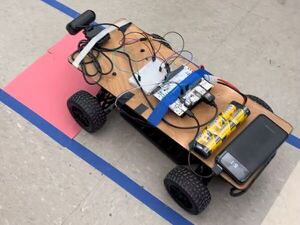
Team Spy Family
"Autonomous vehicles using BeagleBone AI-64 can follow lanes, stop at red boxes and detect stop signs. We made this little autonomous vehicle using BeagleBone AI-64 for our ELEC 553 final project at Rice university to learn how we could use embedded systems and gain hands-on experience in real practical applications. The car is able to detect the lanes and execute the lane-keeping algorithms. As a result, the car could run maintaining between two lanes. When the car detects a red or stops sign during lane keeping, the car would stop and run the image recognition. After that, the car would back to run and stop at the final red box." [...]
Secção Videos
Videos interessantes.
That's all Folks!



